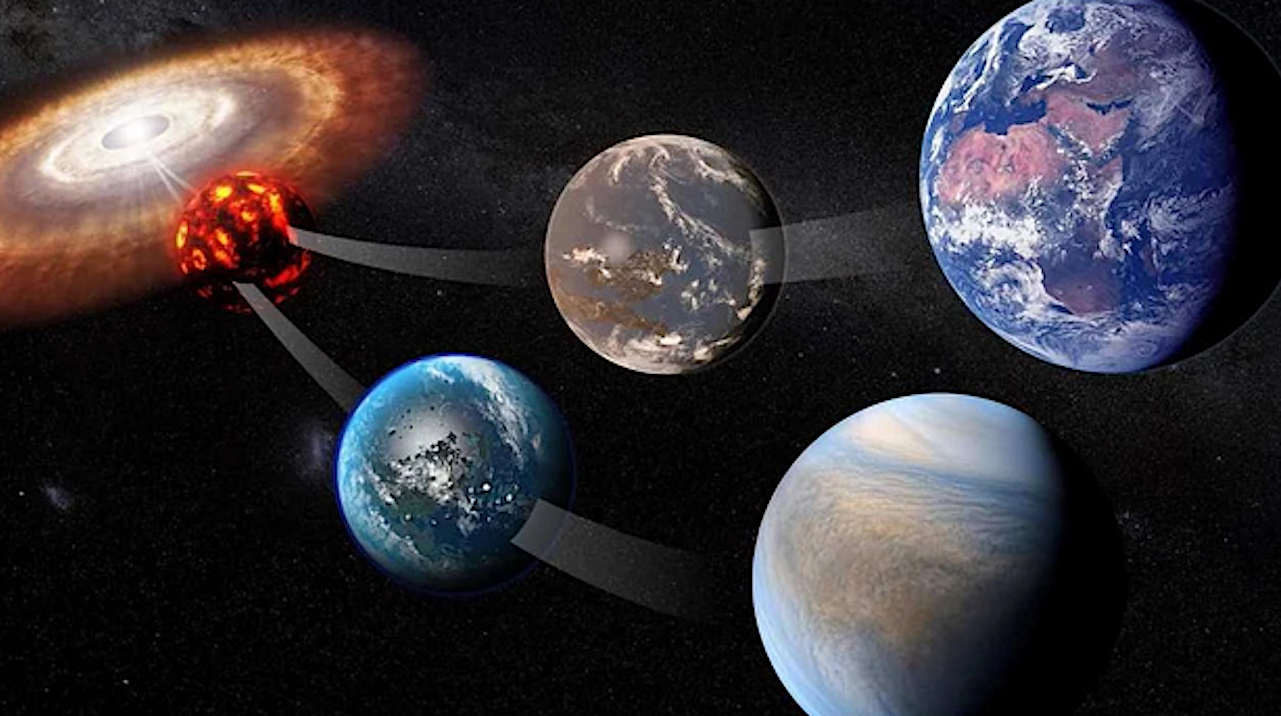Scientists have compiled the first paper containing all known information about planets similar to Venus beyond our solar system. The study has identified the five most likely exoplanets that resemble Venus and could provide valuable insights into Earth’s future, including the risk of developing a runaway greenhouse climate, similar to that of Venus. The discovery of Earth’s twin could also reveal whether Earth or Venus has evolved abnormally. Venus has a mass 20% less than Earth and no tectonic activity, making it difficult for Venus to remove carbon from its atmosphere. Venus still has active volcanoes, and the number of Venus analogs identified in the study could help determine if volcanic activity is common among similar planets. The planets identified in the study are proposed as targets for the James Webb Space Telescope in 2024. The telescope could detect biosignature gases in the atmosphere of an exoVenus, such as methane, methyl bromide, or nitrous oxide, and ultimately the possibility of habitable worlds in the Venus Zone.
Hunting For Venus 2.0.

Scientists have made significant progress in their search for Earth’s “twin,” with the publication of the first paper that compiles all known information about planets like Venus beyond our solar system. The paper’s authors have identified the five most likely exoplanets to resemble Venus in terms of their radii, masses, densities, the shapes of their orbits, and their distances from their stars.
If scientists succeed in finding an analog of Earth’s “twin,” it could provide valuable insights into Earth’s future, including the risk of developing a runaway greenhouse climate similar to Venus.
The paper, published in The Astronomical Journal, provides rankings for the most Venus-like planets in terms of the brightness of the stars they orbit. The brighter the star, the more likely the James Webb Space Telescope will be able to provide informative signals regarding the composition of the planet’s atmosphere.
The current Venus has no water, features surface temperatures of up to 900 degrees Fahrenheit, and floats in a nest of sulfuric acid clouds. Using the Webb telescope to observe possible Venus analogs, scientists hope to learn whether there was a time when Venus was habitable.
The concept of the Venus Zone, proposed by UCR astrophysicist Stephen Kane in 2014, is similar to the habitable zone. The Venus Zone is a region around a star where it would be too hot for water to exist, but not hot enough that the planet’s atmosphere gets stripped away. Scientists hope to find planets that still have significant atmospheres in this zone.
The authors of the paper are particularly interested in finding planets that resemble Venus in terms of mass. The reason being, the mass of a planet affects how long it can maintain an active interior, with the movement of rocky plates across its outer shell known as plate tectonics.
In conclusion, the search for Venus 2.0 is getting closer, and the findings from the research could lead to new discoveries about Earth’s future and its potential for developing a runaway greenhouse climate.
Discovering Clues to Earth’s Future from Venus
Scientists are now closer than ever to finding an analog of Earth’s “twin,” as they have compiled the first paper that contains all known information about Venus-like planets beyond our solar system. The study has identified the five most likely exoplanets that resemble Venus based on their radii, masses, densities, orbits, and distances from their stars.
The research team believes that the discovery of Earth’s twin could provide vital information on Earth’s future, including the risk of developing a runaway greenhouse climate, similar to that of Venus. In addition, this could reveal new insights into the question of whether Earth or Venus has evolved abnormally.
Venus, the second planet from the Sun, has a mass 20% less than Earth. As a result, scientists speculate that the planet has no tectonic activity, making it challenging for Venus to remove carbon from its atmosphere. This could lead to a runaway greenhouse climate, as seen on Venus. Furthermore, Venus has a hard time getting rid of carbon, making the planet’s atmosphere unsuitable for the sustenance of life.
However, new evidence suggests that Venus still has active volcanoes. The study’s co-author, Kane, believes that the number of Venus analogs identified in the study could enable scientists to determine if volcanic activity is common among similar planets. The research team proposes the planets identified in the study as targets for the James Webb Space Telescope in 2024.
The James Webb Space Telescope is an advanced and expensive tool capable of not only detecting if the exoVenuses have atmospheres but also identifying their composition. This could lead to the discovery of biosignature gases in the atmosphere of an exoVenus, such as methane, methyl bromide, or nitrous oxide. Detecting these molecules could indicate the presence of life, and ultimately, the possibility of habitable worlds in the Venus Zone.
The results from the observations by the James Webb Space Telescope will be complemented by NASA’s two upcoming missions to Venus, in which Kane will play an active role. The DAVINCI mission will measure gases in the Venusian atmosphere, while the VERITAS mission will enable 3D reconstructions of the landscape.
The ultimate goal of these observations is to understand the Earth-Venus divergence in climate. According to Kane, exoplanet explorations can give us statistical power to explain the differences between Venus and Earth. The observations could also reveal whether the evolution of Earth and Venus is abnormal or not.
In conclusion, the study brings us closer to finding Earth’s twin and could provide valuable insights into Earth’s future. Additionally, this could reveal whether Earth or Venus evolved abnormally, leading to the discovery of clues to Earth’s future from Venus.
Don’t miss interesting posts on Famousbio









